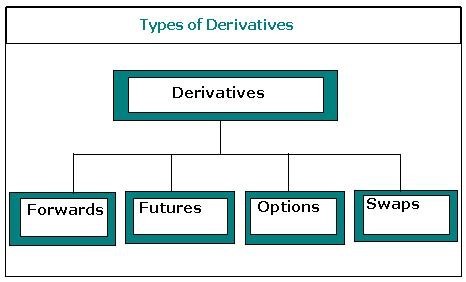
The title of the current paper is Wide Use of Financial Derivatives. As it is known, a financial derivative represents a financial contract between two or more parties, which is based on the future value of the underlying asset. Thus, the conclusion of transactions with derivative financial instruments helps the participants of economic relations get accurate price information. The purpose of the paper is to reveal the notion of derivatives including concepts and classifications. The paper considers the main types of derivative financial instruments such as futures, options, forwards, and swaps, as well as the strategies of their usage. During writing the paper, credible sources were used to help study and research the topic.
Nowadays, financial derivatives are still a little-studied economic system. Nevertheless, the earliest types of financial derivatives appeared several centuries ago. With the increase in capacity of repartition of financial resorts and the growing asperities of economic relations within different states, there are constantly new opportunities of the usage of derivative financial instruments. Financial derivatives received a significant popularity in the market economy in the context of financial globalization. In the book Financial Derivatives: Theory, Concepts, and Problems, the author S. Gupta states that “Derivatives today have become an integral part of the financial system of a country as well as at the international level”. The derivatives market constantly draws the attention of a large number of participants including private speculators and risk managers of big enterprises. It is explained by the great opportunities of the market. Financial derivatives markets play a crucial role in providing economic information to the public. The purpose of the paper is to study the notion of derivative instruments and what role they perform.
Types of derivatives include forwards, futures, options, and swaps.

A derivative financial instrument is an agreement for the implementation of rights and settlement of liabilities for its parties related to the price change of the underlying asset, which is the basis for the financial instrument. It leads to a positive or negative financial result for each side. Thus, at the heart of a derivative, there is a certain underlying asset, which may be a product, a security, a currency, interest rates, statistics, and others. Financial derivatives include futures, forwards, options, and swaps. There are exchange-traded and over the counter derivatives. Thus, the exchange-traded derivatives include options and futures, and OTC – forwards and swaps.
Futures are contracts, which require the stockholder to accept or implement the supply of goods of a certain type, quantity, and quality within a certain time and at a specified price. The authors Robert Kolb and James Overdahl affirm that “A futures contract is essentially a forward contract that is traded on an organized financial exchange”. A forward is a contract that is concluded a transaction of purchase and sale of the underlying asset in the future at a pre-agreed price. An option is a contract that gives a right and not an obligation to vend or purchase a specific underlying asset from the seller of the option within a given time period execution of the contract at a fixed price. In the book Financial Derivatives, there is the following definition of the option “As the name implies, an option is a right to buy or sell, for a limited time, a particular good at a specified price”. A swap is an agreement between the parties concluded to exchange payments. In fact, a swap represents several forward contracts, obligations on which arise with a certain periodicity.
The fundamental strategies for using these tools include speculation, hedging, and arbitrage. Speculation is the conclusion of transactions to obtain benefits from the changes in the market price of the instrument. Speculators provide liquidity of the market. Nevertheless, they are also ready to take all the risks. The derivatives market is extremely attractive for speculators with the great potential due to the fact that the essence of these instruments includes a mechanism of the credit leverage. For example, to open a position on the futures exchange market, it is necessary to make a margin or premium. In such a way, derivatives allow players to perform transactions on much larger sums in comparison with that available to the investor. However, the ratio of return and risk suggests that the higher the potentially possible income, the higher the risk. Therefore, it is worth noting that investments in commodity derivatives carry extremely high risks because in the case of the market movement in the opposite direction, the party of the transaction may incur significant losses. Thus, the investment of money in the derivative financial instruments is an exceedingly interesting and profitable way of investing that, with proper handling, can significantly increase the initial capital. It is desirable to have at least minimal knowledge related to investment laws and understand the laws of the market.
The second strategy of the use of derivatives is hedging. Hedging is insurance, the reduction of the risk of losses due to unfavorable for sellers or buyers changes in market prices for commodities compared with those that were taken into account when concluding the contract. Many companies working with foreign suppliers in the system of deferred payment often face the risk of losses from exchange rate fluctuations. It is also typical for organizations specializing in products, the prices on which have high volatility on both internal and external markets. It is typical for agricultural products, metals, oil, and oil products. To compensate this type of risk, many companies provide the use of hedging. The essence of hedging consists in the fact that in the derivatives market, the deal is conducted, the yield on which is negatively correlated with the yield of the underlying asset. Any change in price will bring a buyer and a seller benefits on one market and losses on the other. Thus, hedging allows fixing the price in the future. There is also an opportunity to make a profit in the amount of the basis for the deduction of costs. It should be noted that in hedging of futures, the financial result of hedging will be the same in the case of movement of the price of the underlying asset in any direction. In the case of purchase of the option, the sum will be determined by the premium of the elected price-strike. Compared with futures, options are less costly and risky. It is better to apply futures when there is assurance in forecasts about the future elaborations in the market. However, the conditions of this contract foresee the obligatory execution of the transaction. Besides, there can be potential losses in the erroneous predictions. Therefore, it is better to use options to limit the risk of a certain amount of hedging.
However, in addition to standardized contracts on the market, over-the-counter (OTC) derivatives – forwards and swaps became extremely widespread. They effectively hedge the basis risk and have greater flexibility concerning the conditions of the contract. OTC hedging instruments are concluded on a contractual basis and allow taking into account any conditions of a futures deal. However, it is not always easy to find a counterparty to the transaction due to the low liquidity of OTC derivatives. Hedging of forward contracts involves the use of OTC forward transactions of purchase and sale of assets. Contracts may be concluded on a full delivery of assets by both parties and delivery of counterparty of the difference between the market price of the underlying asset at the time of the transaction execution and the contract price. Thus, the purpose of hedging is to eliminate the uncertainty of future cash flows. It will allow being fully aware of the future income and expenses arising during the financial or commercial activities.
The third strategy for the use of derivative financial instruments is arbitrage. It is removing of fixed income at the expense of the opening of opposite positions on the same underlying asset but in different markets. Thus, if the price of the underlying asset and the price in the derivatives market cast to the same period of time will be different, it gives the possibility of arbitrage. In addition to the above strategies, there are still many opportunities that financial derivatives offer financial markets. For example, derivatives are widely used in the formation of innovative financial products implemented through financial engineering in the various spheres of economic activity.
In recent decades, the world economy is characterized by a new stage of its development – globalization. This process has an inclusive nature affecting all aspects of social life – politics, economics, science, culture, morality, and ethics. However, it is most clearly manifested in the globalization of the economy and particularly in the monetary sphere. One of the most dynamic segments, which rapid growth has coincided with the transition to the stage of the world economy globalization, has become the market of derivative securities. The financial derivatives market is the one most significant segments of the financial market. The market of financial derivatives is developing extremely rapidly. Financial derivatives offer the modern market great opportunities for hedging risks, conduction of speculations, and arbitrage transactions, as well as the introduction of innovative products on the financial market. The elaboration of the derivatives market and the usage of its opportunities can help enhance the activities of the various entities of the financial market.


